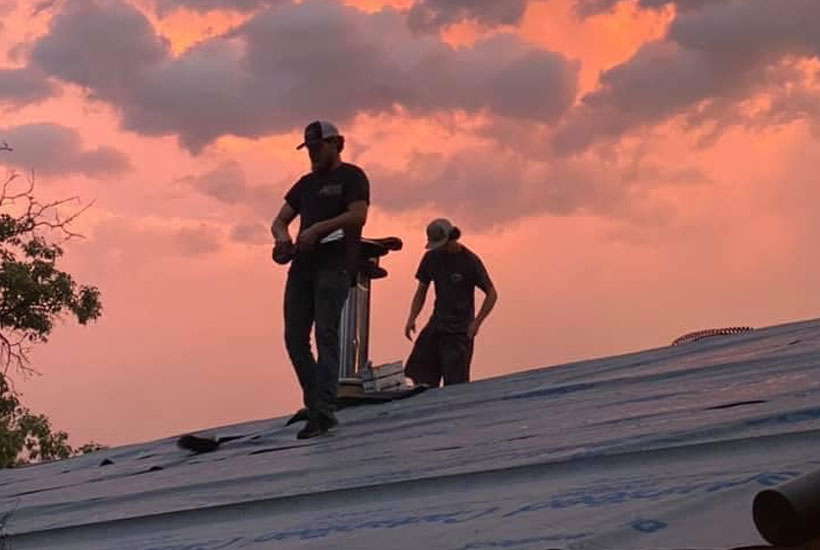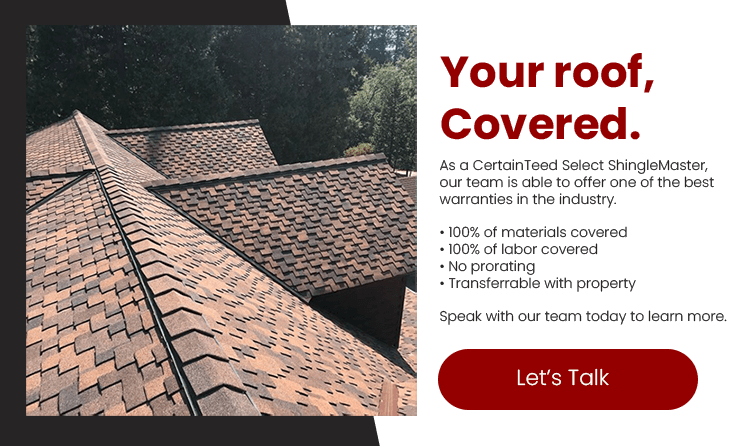You’ve just discovered that your roof has suffered damage in the latest storm or fire. You’re fairly sure that your home insurance policy covers roof damage. So, you’ll now need to go through the claims process with your insurance company. How will this work, and what should you watch out for?
Most home insurance claims are actually related to the roof, which can be a bad thing because insurance companies try to limit their risk surrounding the roof. Most do not tell you to talk to a professional roofer before you begin the claims process—but you absolutely should. Here is how insurance claims work for roof damage and a few of the common pitfalls that you should avoid.
What Damage is Covered?
The first thing you’ll want to find out is if the type of roof damage you have is covered by your home insurance policy. Every policy is different, so you should look into the specifics of your policy by reading your physical copy of it. That said, these documents can be a challenge to understand. So, here are a few basic things that you can expect coverage for:
- Hail damage
- Fire damage
- Wind damage
- Tornado damage (different from wind damage)
- Hurricane damage (different from hurricane damage)
- Lightning damage
- Water damage from roof leaks
So long as your policy offers coverage for these dangers in general, it should cover their impact on your roof. Note, though, that if your policy only has a wind damage clause and not one for hurricanes or tornados, these two storms will not count under the wind damage policy. Some policies also don’t cover lightning strikes and damage from trees. When you’re choosing your next home insurance policy, you should keep these rarer coverage types in mind.
However, there are many things that your home insurance policy will not cover:
- Trees falling on your roof
- Mistakes made by your roofer
- Mistakes you made while attempting DIY roofing
- Damage from walking on the roof
- Damage from placing objects on the roof
- Manufacturer error
If you know that the type of damage your roof has suffered is not covered by your homeowner’s insurance policy, you should consider looking into your manufacturer’s warranty or your roofer’s warranty. You may have coverage there.
How Do You Make A Roof Insurance Claim?
Before you start the claims process, you should first reach out to a roofer that you trust to help you gather evidence, assess the roof, and determine what likely caused the roof damage. The reason that you want to start with a roofer is they can help you determine if the damage is likely to be covered before you start the claim. If not, they can help you with your manufacturer’s warranty or their own labor warranty. Plus, you’ll have their support as you deal with the insurance company, and that can help prevent you from being taken advantage of.
Your roofer will also give you an estimate on how much it will cost to fix the damage. If the cost is less than your deductible, you should not make a claim. This will only drive up your insurance premiums.
Begin the claims process by calling your insurance company and starting a claims application. The application may be available online, which can save you some time. Your roofer can provide photos and other details that may be called for in the application.
Then your insurance company will send over an adjuster to take a look at the roof. You may think of them as your enemy, and it is true that they have a lot of power in the situation, but you should be kind to them. They’ll complete their assessment, and the insurance company will let you know whether your application is approved or denied.
What if My Claim is Denied?
If your insurance company denies your claim, you have a few options. You can dispute the claim with the insurance company and see if they will reconsider. In this case, it is a great idea to have a professional roofer working with you so you can maximize your chances of a successful appeal.
You can also see if your roofer’s warranty or manufacturer’s warranty may cover the damage. If this doesn’t work, you may have to pay for the roof damage entirely out of pocket.
What if My Claim is Approved?
If your claim is approved, you will still have to pay your deductible. Sometimes insurance companies charge two deductibles for roof damage. For example, if you have a deductible for wind damage and hurricane damage, and both damaged your roof, then you may have to pay both deductibles.
Then you will get your payout. Your payout may be less than you imagine because of depreciation cost. Most homeowner’s insurance policies offer only the real current value of what they insure, not the cost of it when it was first replaced.
Which means your insurance company only covers the current value of your roof, not what it costs to replace it. Depreciated cost may be a third of the original cost of the roof if the roof is old. In essence, you roof isn’t worth very much money if it is near the end of its lifespan. If you have a brand-new roof on the other hand, it should be worth most of its original value.
Or, your home insurance policy may also cover the part of the roof that is damaged, so you may have to do only a partial replacement or pay for the rest of the replacement out of pocket.
Once you’ve received the money, you can have your contractor begin to work on the roof. When they’ve finished, you may receive your second amount from the insurance company if you have replacement costs insurance.
Work with the Right Roofer
Filing a claim with your home insurance company can be a frustrating process. Some companies will resist approving claims if they can and having an expert on your side can be very helpful.


